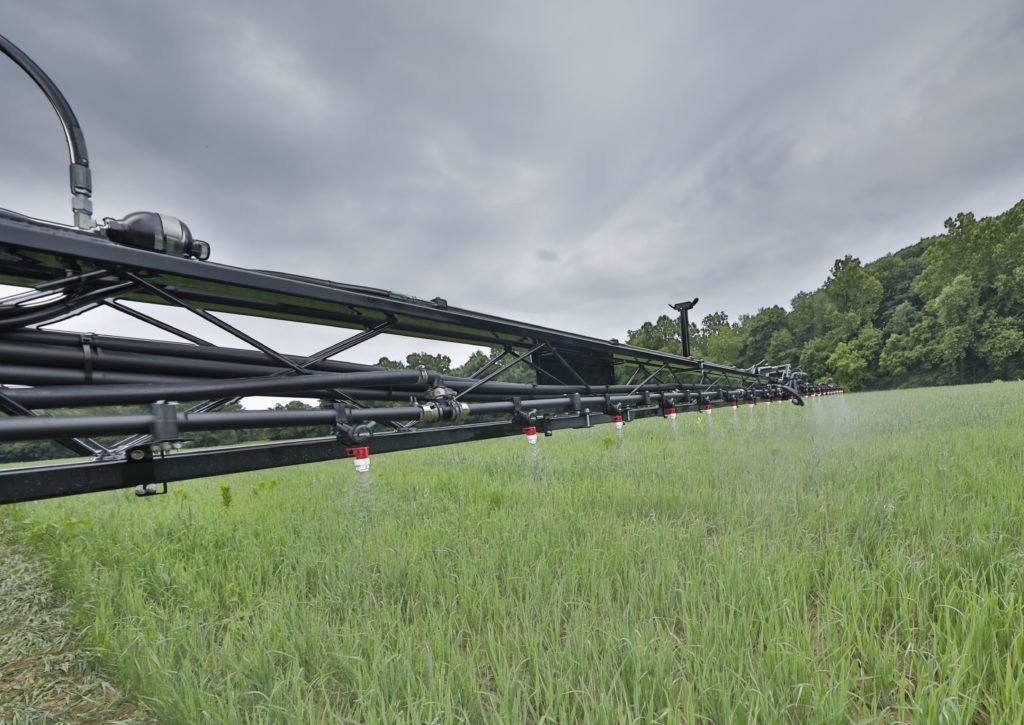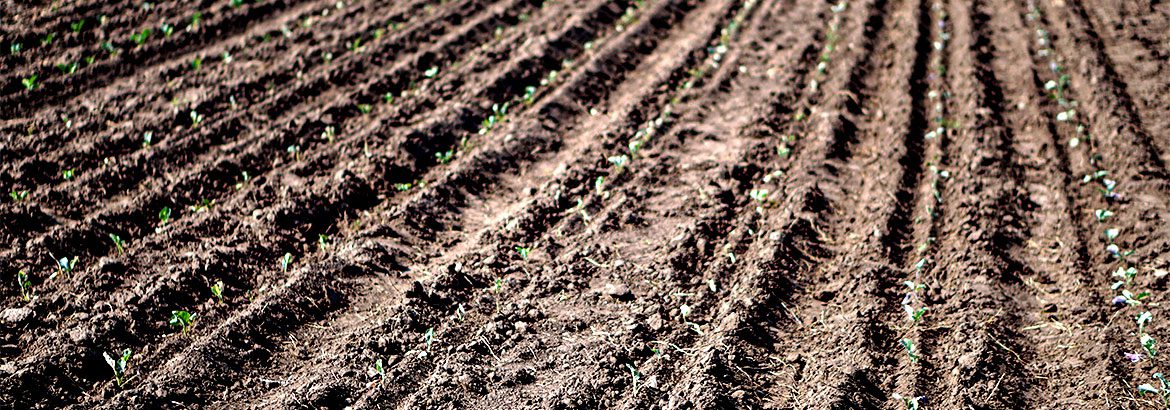Owning your own sprayer plays a major role in your no-till and cover crop success
Farmer balances soil health, high productivity with these two systems
Weed control is an increasing priority for many crop farmers today, especially with rising concerns about herbicide resistance in fields around North America.
Just as high of a priority for many farmers is soil health. To that end, cover crops are joining no-till systems as an increasingly common way to sustain soil health without sacrificing crop productivity. The two have one major thing in common: neither works without a sprayer.
The Chesapeake Bay region, an area not known for bumper crops but with high sensitivity to water quality and awareness of environmental issues, may seem a strange setting for Trey Hill. He’s a farmer who likens his operation more to a large, progressive Midwest row crop farm than smaller neighboring operations in the area.
But, it’s where Hill calls home, operating a farm that’s been in his family for over a century. Harborview Farms started out near Rock Hall, Maryland, in the early 20th century, and by the time Trey’s father Herman Hill, Jr. brought his son into the operation in the 1980s, soil- and water-saving practices were moving up the farm’s priority list. Today, two of those practices are no-till and cover crops, and a foundational element to making them both work is Hill’s sprayer.
Trey Hill approaches those practices through the lens of productivity, typically employing what many in agriculture would consider modern, conventional crop inputs, including full-rate chemical applications and genetically modified seed to maximize crop yield. Balancing those inputs with production systems like cover crops and no-till, he’s able to maximize output while being attentive to the long-term needs of his environment. In other words, two things historically considered mutually exclusive converge on Harborview Farms.
“I’m always looking for the most efficient ways to apply chemicals, and I’d say our sprayers are up-to-date,” Hill said. “There’s no way I could operate my farm this way if I didn’t use the latest chemistry and advanced seed genetics.”
No-till and cover crops as part of a broader strategy
Why go to the trouble to integrate environmentally sound production practices onto a farm whose goal is to maximize crop yield? The answer is simple: Hill sees direct impacts of a changing climate on his farm, and he wants to ensure Harborview Farms remains productive well into the future. While the right practices add up to production systems that wind up profitable for the farmer in the long run, the right combinations of technology and attentiveness to soil health and structure are helping Hill do more than make ends meet.
“We have had a lot more large rainfall events in the last few years. It’s pretty well-documented that the changing gulf stream has led to some very, very wet years,” Hill said. “We need to build resiliency in our soils so they can better absorb more of these four- and five-inch rains we’ve been having more often. We need to lessen erosion potential and increase soil organic matter.”
For Hill, it’s not just about clean water. When he transitioned to no-till and cover crops, he kept a close eye on maintaining long-term productivity and farm revenue. Over time, these types of practices have made his soils more malleable in the face of widening weather extremes and capable of supporting bumper crops year-in and year-out.
No-till helps create a more balanced environment for soils. When covered by crop residue year-round, soils in no-till systems don’t undergo typical wide swings in temperature common in conventional tillage systems. That residue helps the soils retain moisture better in arid areas and reduces erosion from both water and wind. The result is a more mellow seedbed with better-balanced organic matter.
But in the absence of tillage, no-till farmers also rely on chemicals to provide pre-emergence and knockdown control of weeds that otherwise would be managed by tillage. Precision is important when controlling weeds in a no-till system, making it difficult to rely on commercial applications since hitting a specific targeted time window in of the utmost importance.
Distinctions of cover crop systems
While they add to the benefits of no-till, cover crops also create new demand for chemical applications. They have grown in popularity among farmers in recent years for some of the same reasons as no-till’s earlier surge in popularity: cover crops help preserve soil structure and health by preventing erosion and providing additional sources of soil nutrients.
Often integrated into no-till production systems, cover crops take time to establish, but once a complementary mix has reached maturity, it can offset supplemental fertilizer and some herbicide needs if managed correctly. And, that management often includes using a sprayer to terminate the cover crop either immediately before or after planting a row crop. In addition to overall improved soil health and soil organic matter, benefits include increased row crop yield potential, grazing opportunities and reduced tillage costs.
“Cover crops generally are not harvested because many of their benefits are gained from decomposing biomass left in the field. Thus, cover crops must be efficiently terminated to prevent competition with cash crops. Inadequate termination of a cover crop or allowing a cover crop to go to seed may result in unwanted cover-crop growth during cash-crop production,” according to USDA report by a team led by Jason S. Bergtold, Kansas State University ag economist. “Herbicide spraying, known as chemical ‘burn down,’ is one method of termination. A burn-down pass to terminate a cover crop is unlikely to be an ‘additional’ pass for a no-till operator, as it is common to spray a non-selective herbicide prior to planting to terminate winter weeds.”

Maximizing cover crop benefits with a sprayer
Since integrating cover crops into his crop rotation in recent years, Hill has begun “planting green,” a technique that involves terminating his cover crop by spraying after he’s planted his row crops in the spring, yet another process whose success depends greatly on having a precise, effective sprayer. By spraying after he’s sown his cash crop, he’s able to maximize the soil health benefits of the fall-planted crops that complement his corn and soybeans for reasons similar to the soil health benefits of no-till systems.
“Planting green widens the spring planting window for us, because the cover crops help buffer some of the soil temperature variations that can make corn emergence difficult in the spring,” Hill said. “We’re actually planting earlier than we ever have because we’re planting into soil with living plants on it.”
The ability to better regulate soil temperature variation is just one of the benefits that make cover crops an ideal fit in many no-till systems in which cover crop residue can augment existing benefits of decreased tillage. “Residue mats minimize rainfall erosion, help maintain a constant soil temperature and decrease weed emergence,” Bergtold said.
After planting, Hill applies a full rate of herbicide to terminate the cover crop that usually comprises cereal rye, barley or wheat along with a clover, rapeseed and radish mix. Once the corn crop is planted, the cover crop is terminated within five to 10 days.
Timing termination
Why wait until after corn planting to terminate the cover crop? Hill said in addition to helping moderate soil moisture as well as temperatures, his specific cover crop mix has natural herbicide properties that complement the full rates of atrazine or other small-seeded broadleaf herbicides he applies after planting.
“You have to figure out which cover crops complement your cash crop instead of competing with it,” Hill said. “We still apply full rates today to prevent weeds from building resistance. Particularly with soybeans, this mix of cover crops and herbicides helps prevent marestail and Palmer amaranth. If you can knock it down when you terminate your cover crop around emergence, you won’t get it all year.”
Just like with chemical applications targeting specific weed pressures during the growing season, timing is hugely important when knocking down weeds when terminating cover crops after planting. Determining what will work best is a field-by-field decision process, Hill said.
“Timing is critical, especially with soybeans. Sometimes we can wait until our corn has emerged,” he said. “It just depends on the situation. Typically, we’ll chase the planter with the sprayer and try to do it in the same day.”
Why a sprayer is critical
Just like with no-till systems, ownership of a sprayer is an important part of making a cover crop system work in many instances given the importance of timing the termination of the crop, especially when planting green. “Personal ownership of a sprayer is convenient due to the required timeliness of this type of operation,” Bergtold said.
The combination of a wider spring planting window for corn and soybeans and natural season-long herbicide properties make cover crops a financially viable system for Hill’s operation, and he said he’s likely to continue working toward perfecting it to ensure his soils see continued benefits that will appear through continued strong crop yields and consistent soil organic matter and nutrients. He sees his sprayer as a critical component of managing his cover crops, and that will continue especially given the new components and features he expects in coming years.
“I’d like to get pulsating nozzles to help better deal with dicamba. Those higher-tech nozzles will really come into play with that product,” Hill said.
See some of the other technologies Hill has employed on his farm. If you’re interested in learning more about terminating cover crops with herbicide applications, start here. If you’re ready to get started but need to determine which sprayer is right for you, start here.



